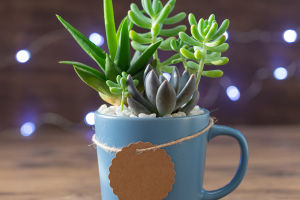Daffodils symbolize spring and renewal with their vibrant yellow petals and delicate fragrance.
However, despite their beauty, these flowers contain toxic compounds that can cause harm if ingested.
In the event of accidental consumption of daffodils, taking immediate action to mitigate the effects of poisoning and seeking appropriate medical assistance is essential. This essay will explore what to do if you are poisoned by the accidental consumption of daffodils, including recognizing symptoms, seeking medical help, and implementing first aid measures.
First and foremost, it's crucial to recognize the symptoms of daffodil poisoning. The toxic compounds found in daffodils, such as lycorine and narcissine, can cause a range of symptoms, including nausea, vomiting, diarrhea, abdominal pain, dizziness, and confusion.
In severe cases, ingestion of daffodils can lead to convulsions, hallucinations, and cardiac arrhythmias. It's essential to be vigilant and seek medical attention promptly if these symptoms occur after ingesting daffodils or any part of the plant, including the bulbs, leaves, or flowers.
Suppose you suspect that the accidental consumption of daffodils has poisoned you or someone else; taking immediate action is essential. The first step is to call emergency services or seek medical assistance immediately.
Provide as much information as possible about the situation, including the number of daffodils ingested, the time of ingestion, and any present symptoms. Emergency medical personnel can guide you over the phone and may instruct you to take specific actions while waiting for help to arrive.
While waiting for medical assistance, several first aid measures can be implemented to help mitigate the effects of daffodil poisoning. If the individual is conscious and can swallow, give them small sips of water to help dilute the toxins and prevent dehydration.
However, do not induce vomiting unless instructed to do so by medical professionals, as this can exacerbate the situation and cause further harm.
Removing any remaining traces of daffodil from the mouth is also essential, as rinsing the mouth thoroughly with water prevents further absorption of toxins. If the individual is experiencing nausea or vomiting, help them assume a comfortable position and provide reassurance while waiting for medical help to arrive.
Once medical assistance arrives, the individual may be taken to a healthcare facility for further evaluation and treatment. Depending on the severity of symptoms and the amount of daffodil ingested, treatment may involve supportive care, such as intravenous fluids to prevent dehydration and medications to alleviate nausea and vomiting.
In more severe cases, activated charcoal may be administered to help absorb the toxins and prevent their absorption into the bloodstream.
Accidental consumption of daffodils can lead to poisoning and a range of symptoms, from mild gastrointestinal upset to more severe neurological and cardiac effects. If daffodils poison you or someone else, it's crucial to recognize the symptoms, seek medical assistance promptly, and implement appropriate first aid measures while waiting for help.
With prompt action and proper medical treatment, the effects of daffodil poisoning can be mitigated, and the individual can fully recover.


